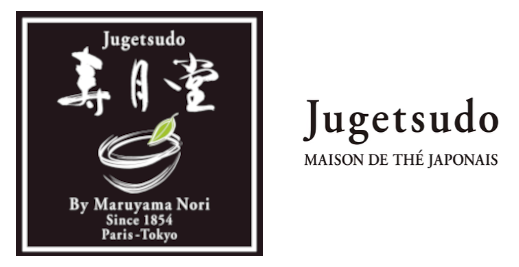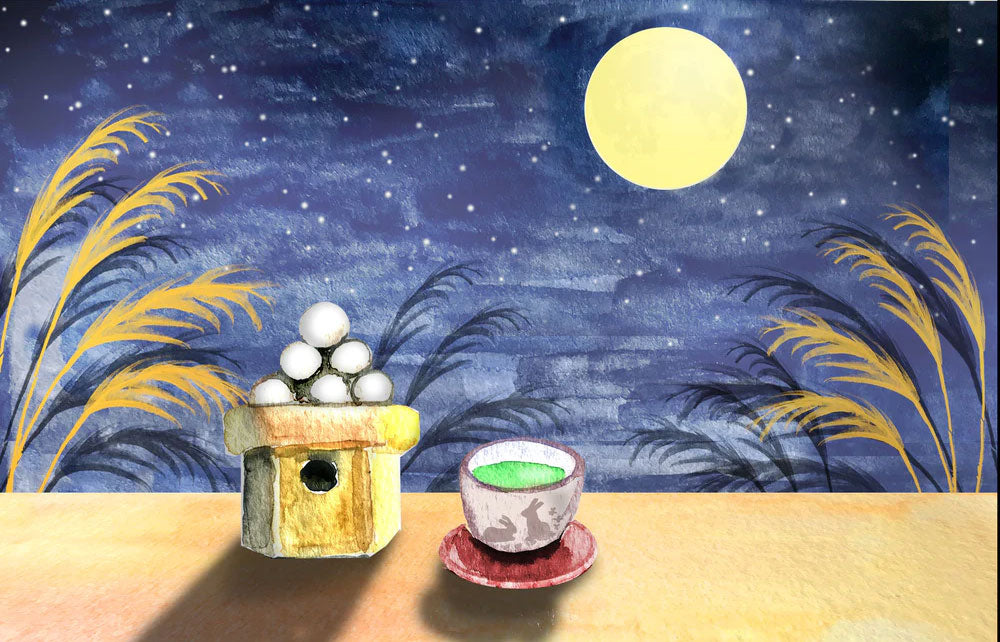The Otsukimi Festival is the perfect opportunity to admire the full moon, stunning in the autumn night sky.
Once summer has passed and the weather has cooled, we enjoy the "Mid-Autumn Moon", a must-see of the season in Japan, because the moon is then known to be at the height of its beauty. It is during the fifteenth night of the lunar month, called j ū goya , that we contemplate her and then make numerous offerings to her in thanks for the autumn harvests. The name Jugetsudo also means "the place where we contemplate and celebrate the moon", thus reminding us of the Japanese attention paid to nature and the progression of the seasons, marked by numerous traditions such as that of the Otsukimi.
This year we will be able to admire the full moon around Friday September 29.
This is an opportunity for us to celebrate this Japanese tradition which marks the highlight of the start of the school year.
We invite you to come and taste small dango (small balls of rice paste with sweet beans or soy powder) accompanied by a small tea
It is with pleasure that we are waiting for you to share this warm moment on Friday September 29 during show hours (from 11 a.m. to 6 p.m.)
This event is open free to all customers who wish to stop by for tea or simply to do some shopping that day.
Hoping to see you at the full moon!
Full Moon Party at Jugetsudo
Date: Friday September 29 11 a.m. to 6 p.m.
Address: 95 RUE DE SEINE 75006 PARIS
TEL: 01 46 33 94 90
EMAIL: chumon@maruyamanori.com
Here is the reading on the Tsukimi:
↓
-------------------------------------------------- ------------------------------------------
In the Shinto cult practiced in Japan, it is the moon divinity Tsukuyomi who governs the night world, and it is also attested that the star has been admired and celebrated since the time of antiquity Jômon. The origins of Otsukimi are not unrelated to the essential role of the lunar cycle in agricultural activities and daily life. It was from the Asuka period (592 AD) that the cycles of the moon became the basis of a lunisolar calendar. It was notably used to set the dates of celebration of lunar deities.
In the Heian period (794–1185), a moon gazing ceremony called ch ū sh ū setsu was adopted. It was practiced by the nobles on the Chinese model, who then devoted themselves to reading poems, contemplating the reflection of the star in cups of sake and enjoying all kinds of entertainment on the theme of the moon. This tradition became popular from the Edo period (1604-1868), particularly among the peasant class who, for Otsukimi, offered the deities susuki (a type of reed) tsukimi dango (sweets made from rice flour made for the occasion), as well as potatoes from the harvest. In doing so, the peasants expressed both their thanks for the harvest obtained but also their wishes that the following year's harvest would be just as abundant.
We call j ū goya the fifteenth night of each month of the lunar calendar, but the term more particularly designates that of mid-autumn (autumn then corresponded to the seventh, eighth and ninth months), that is to say the fifteenth night of the eighth month. It is during this time of year called ch ū sh ū that the night sky is clearest and the moon is most beautiful, so much so that it is then called ch ū sh ū no meigetsu (“the famous mid-autumn full moon"). If we look at the current solar calendar, the night of j ū goya in the lunar calendar can correspond to a period spanning from September 7 to October 8. It falls on Friday September 29 this year.
The second night when the moon is supposed to be the most beautiful is called j ū san'ya . Taking place about a month later, it gives rise to a second Otsukimi which celebrates the harvest of soybeans and chestnuts, the end of harvest period differing from one region to another. If the celebration of j ū goya is of Chinese origin with an emphasis on prayer to the moon, that of j ū san'ya is Japanese and is more of a thank you for the harvests. In 2023, the night of j ū san'ya will take place on October 27.
Why not also place some offerings on your window sill or veranda, or if you have one, in your garden and fully appreciate the beauty of the moon for j ū goya ?
Offerings for Otsukimi
Susuki (Japanese reeds)
Susuki , a species of grass present throughout the country, are well known to the Japanese. They are presented to the deities as yorishiro , “approach substitute.” Indeed, ears of rice are normally offered so that the gods can take shelter, but as the rice matures after the Otsukimi, it is the susuki , of similar appearance, which are used instead to invite the deities of the moon to visit us. In addition to the hope of abundant harvests for the following year, susuki also represent a form of protection against evil spirits and disasters that could spoil them.
Considered one of the seven plants representing autumn, susuki motifs are frequently found on kimonos, tableware and even tea objects. For the occasion, it is also welcome to use seasonal plants and flowers as decoration.
Tsukimi dango
Tsukimi dango are small balls made from rice flour, cousins of mochi . Their shape evoking the roundness of the full moon, they also symbolize both thanks and wishes for past and future harvests.
However, there are many regional variations of tsukimi dango . If in Kantô (Tôkyô region), they are white and round like the full moon, in Kansai (Kyôto and Ôsaka region), they are surrounded by red bean paste to evoke a taro root. Many other colors, ranging from brown to pink, can also be used. After being offered, tsukimi dango are eaten and believed to attract happiness and health.
The night of j ū goya also gives rise to particular customs. For example, the tradition of “dango thieves”: neighborhood children are allowed, without fear of being reprimanded, to steal tsukimi dango left outside by families. This pilferage is even hoped for because it will mean for the “stolen” families that the god of the moon has tasted the treats without leaving a crumb. Thus, even today, it is normal in some areas across Japan to display tsukimi dango or ordinary sweets in front of homes on the night of j ū goya for children to take, an occurrence that does not is reminiscent of Halloween night.
The Night of J ū Goya and the Rabbits
For the Japanese, the reliefs of the Moon visible from Earth evoke a rabbit working with mochi dough. In one chapter of the Jataka , the cautionary tales about Buddha's past lives compiled in India, the rabbit is presented as a past incarnation of the Buddha. The Buddhist tradition having been transmitted to Japan, the moon has since been associated with the image of the rabbit.
Furthermore, in the classic collection of Konjaku monogatari (“Collections of stories that are now in the past” – 11th century), an anecdote tells that a rabbit sacrificed itself by throwing itself into a fire to appease the hunger of a hungry old man. This old man having revealed himself to be a divinity, he would have, as a sign of gratitude, allowed the rabbit to be reincarnated on the lunar star.
It is often explained that this “rabbit” visible on the surface of the moon is “preparing offerings to the deities” or “would prevent us from hunger”. However, when we think that the mid-autumn festival celebrates the abundance of harvests, we can also see it again as a symbol of gratitude, the newly harvested rice then being used to make mochi offered to the gods at New Year, among others.
The Jugetsudo team wishes you to fully enjoy Otsukimi and the long autumn nights!

